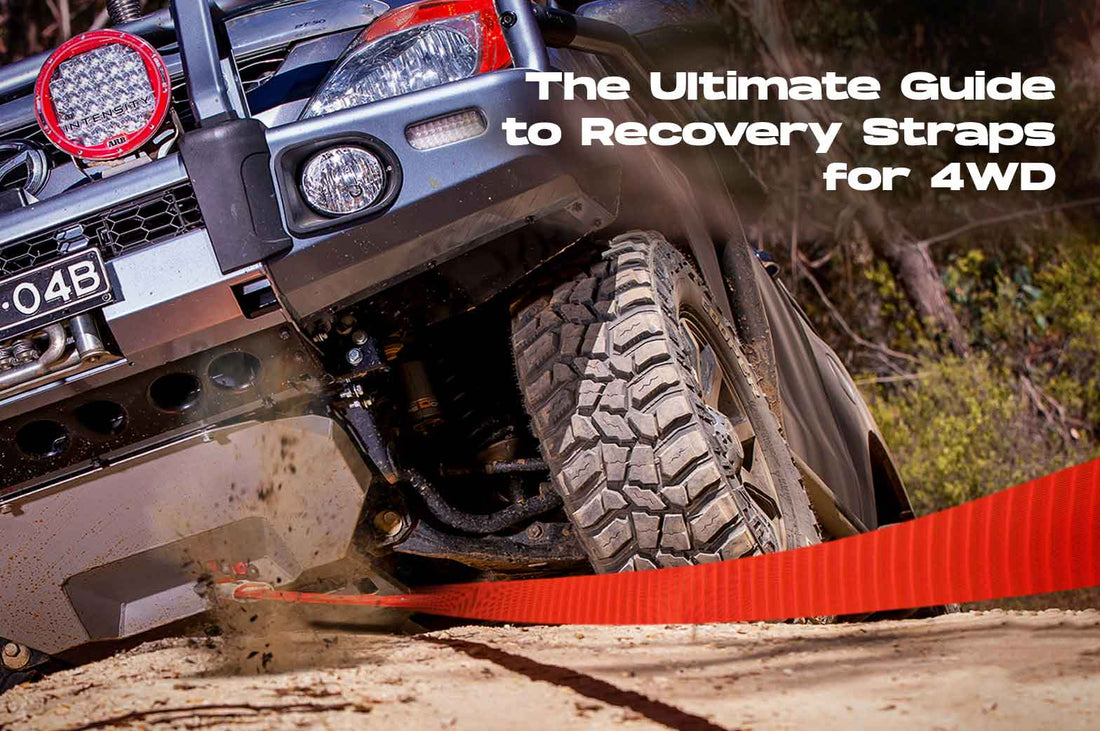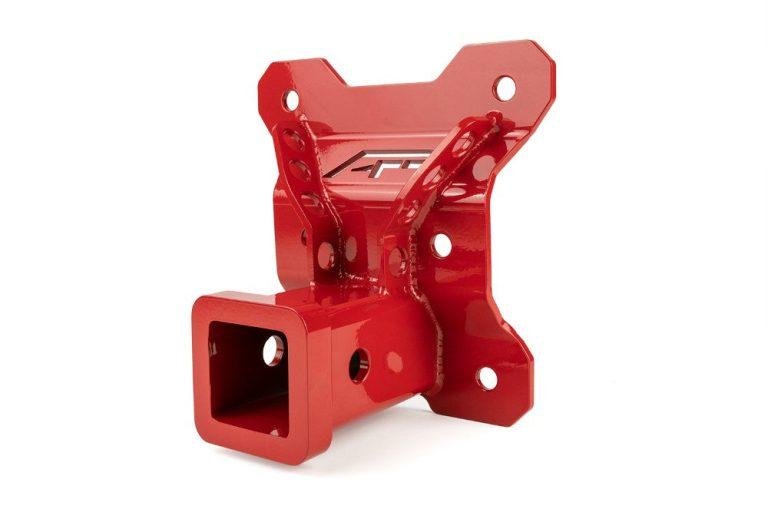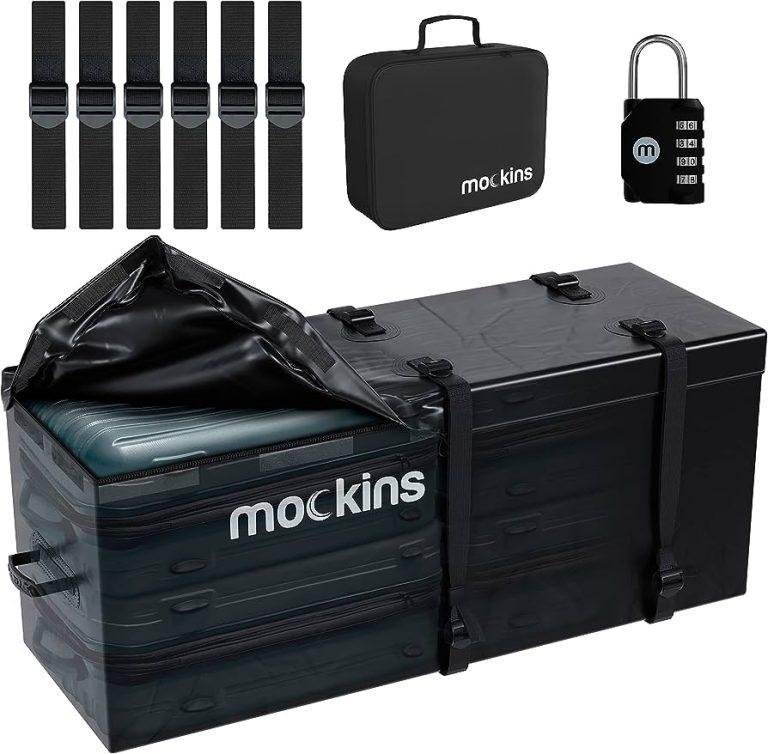A soft shackle is a flexible and lightweight alternative to a traditional metal shackle. It is made from high-strength synthetic fibers and is used in various applications where a strong and secure connection is required.
A soft shackle is a revolutionary innovation in the world of rigging and towing. Unlike metal shackles, which are heavy and can be prone to damage or injury, soft shackles are lightweight, flexible, and strong. They are made from synthetic fibers such as dyneema or spectra, which have high tensile strength and excellent resistance to abrasion.
Soft shackles are commonly used in off-road recovery, sailing, and other outdoor activities where weight and safety are critical. They are designed to be easy to use, with a simple and secure closure system that eliminates the risk of pinching or releasing under load. In addition to their strength and flexibility, soft shackles are also environmentally friendly. Unlike metal shackles, they do not rust or corrode, and they can be easily inspected and maintained. Overall, soft shackles provide a reliable and efficient alternative to traditional metal shackles, making them a popular choice for many industries and enthusiasts.

Credit: miolle.com
Understanding The Versatile And Safe Alternative To Traditional Shackles
Discover the soft shackle, a versatile and safe alternative to traditional shackles. It offers a reliable solution for various applications, with its lightweight design and impressive strength. Say goodbye to bulky and cumbersome shackles, and embrace the convenience and flexibility of soft shackles.
Definition And Brief History Of Soft Shackles
Soft shackles are a versatile and safe alternative to traditional metal shackles commonly used in various industries. These lightweight and flexible shackles are made from high-strength synthetic materials, such as dyneema or spectra, which offer exceptional strength and durability. Unlike their metal counterparts, soft shackles do not have any hard components, making them safer and more forgiving in certain applications.
In terms of history, soft shackles have gained popularity in recent years, particularly in the boating and off-roading communities. Initially, the concept of soft shackles was inspired by the need for a safer and lighter alternative to metal shackles, especially in marine environments where corrosion is a major concern.
Today, soft shackles have evolved to become an essential piece of equipment in numerous industries.
Here are some key points to understand about soft shackles:
- Soft shackles consist of a loop of synthetic rope, typically with a spliced eye and a knotless design.
- They are designed to be strong, durable, and easy to handle, offering significant advantages over traditional metal shackles.
- Soft shackles can have a breaking strength comparable to that of metal shackles, despite their lightweight construction.
- The lack of metal components in soft shackles eliminates the risk of potential injuries caused by heavy and sharp objects, making them safer to use.
- Soft shackles are also more versatile than traditional shackles, as they can be used in a wider range of applications, such as rigging, towing, and vehicle recovery.
- These innovative shackles are often used in off-road vehicles, sailboats, and even in industrial applications where a lightweight and strong connection is required.
In the next section, we will further explore the advantages and applications of soft shackles, highlighting their versatility and utility in various industries.
Exploring The Design And Mechanics Of Soft Shackles
Soft shackles are a modern alternative to traditional metal shackles. These lightweight and versatile tools are made of synthetic materials, offering improved strength and flexibility for a variety of applications. Discover the design and mechanics of soft shackles and their advantages in this informative article.
When it comes to marine and outdoor activities, traditional metal shackles have been utilized for connecting lines and rigging. However, with technological advancements, a more innovative alternative has emerged – the soft shackle. Designed to replace traditional metal shackles, soft shackles offer numerous benefits including being lighter, easier to handle, and kinder to the surfaces they come into contact with.
In this section, we will delve into the anatomy of a soft shackle, the materials and construction involved, as well as the load-bearing capacity and strength it provides.
Anatomy Of A Soft Shackle:
A soft shackle consists of several key components, each serving a specific purpose:
- Loop: The main body of the soft shackle, formed by a strong and flexible rope or webbing material.
- Thimble: Often made of a high-strength material like dyneema, the thimble acts as a support structure within the loop, preventing abrasion and ensuring durability.
- Knot: Securing the ends of the loop together, the knot is typically a simple and reliable overhand knot that maintains the integrity of the shackle.
- Pulling point: Located at the base of the loop, the pulling point provides a stable connection point for attaching the shackle to various equipment or lines.
Materials And Construction:
Soft shackles are commonly constructed using advanced synthetic materials that offer superior strength-to-weight ratios. The most popular choice is dyneema, a high-performance fiber renowned for its exceptional strength and resistance to abrasion. The construction process involves:
- Braiding: The rope or webbing material is tightly braided to enhance its overall strength and durability.
- Splicing: Unlike traditional shackles, soft shackles do not rely on metal pins for connection. Instead, splicing is employed to create a secure and reliable bond between the rope or webbing strands.
Load-Bearing Capacity And Strength:
Soft shackles are designed to withstand considerable loads, making them suitable for various applications. Their load-bearing capacity often exceeds that of metal shackles of similar size. The factors contributing to their strength include:
- Material strength: Synthetic fibers like dyneema possess exceptional tensile strength, allowing soft shackles to withstand substantial forces without compromising integrity.
- Proper construction: The braiding and splicing techniques used in the manufacturing process ensure optimal load distribution and structural integrity.
- Design considerations: The overall design of a soft shackle takes into account stress concentrations and distribution, ensuring the shackle can handle the desired loads safely.
Soft shackles provide a versatile and reliable alternative to traditional metal shackles. Understanding their anatomy, materials, construction, and load-bearing capacity enables users to make informed decisions when choosing the right soft shackle for their needs. So whether you’re an avid sailor, off-road enthusiast, or outdoor adventurer, incorporating soft shackles into your equipment arsenal can greatly enhance safety and efficiency in various applications.
The Benefits Of Using Soft Shackles In Various Situations
Soft shackles are versatile and practical tools that offer numerous benefits in various situations. Whether used in marine applications, off-road adventures, or industrial settings, soft shackles provide a lightweight, strong, and flexible alternative to traditional metal shackles. Their easy handling, low maintenance, and ability to minimize damage make them an excellent choice for those seeking reliable and efficient connections.
Lightweight And Compact Design:
- Soft shackles are designed to be lightweight and compact, making them an ideal alternative to traditional metal shackles.
- They are typically made from high-strength synthetic fibers such as dyneema or spectra, which are not only incredibly durable but also significantly lighter than their metal counterparts.
- The lightweight nature of soft shackles makes them easier to handle and transport, especially in situations where weight is a concern, such as backpacking or boating trips.
- Additionally, their compact design allows for easy storage, taking up minimal space in your gear bag or toolbox.
Reduced Noise And Vibration:
- Unlike metal shackles, soft shackles are designed to reduce noise and vibration when in use.
- Metal shackles can create clanking or rattling sounds that can be distracting or annoying in certain situations.
- Soft shackles, on the other hand, absorb shock and minimize noise thanks to their flexible and cushioning properties.
- This makes them particularly useful in applications where noise reduction is important, such as marine environments or situations where stealth is required.
Improved Safety And Ease Of Use:
- One of the key benefits of using soft shackles is their improved safety compared to traditional metal shackles.
- Soft shackles do not have any sharp edges or metal components that can cause injury or damage.
- Additionally, they are easier to handle and manipulate due to their lightweight and flexible nature.
- Soft shackles can be quickly and securely attached or detached using simple techniques like knotting or looping, making them user-friendly even for those with limited knot-tying skills.
- The ease of use and reduced risk of injury make soft shackles a popular choice in various situations, including off-roading, sailing, camping, and rigging applications.
Exploring The Variety Of Soft Shackle Options Available
Discover the wide range of soft shackle options available, a versatile tool for various applications. These lightweight, durable alternatives to traditional shackles offer flexibility and strength in a compact design, making them a popular choice among outdoor enthusiasts and professionals alike.
Soft shackles are versatile and reliable alternatives to traditional metal shackles commonly used for various applications, including rigging, boating, and off-roading. They offer numerous benefits such as lightweight construction, easy handling, and minimal to no damage risk to surfaces. When it comes to soft shackles, there are several options available to cater to different needs and preferences.
Let’s explore the variety of soft shackle options below:
Dyneema Soft Shackles:
- Dyneema soft shackles are crafted from high-performance synthetic fiber known as dyneema.
- These shackles are incredibly strong and boast an impressive strength-to-weight ratio.
- They are resistant to uv damage, abrasion, and most chemicals, making them suitable for outdoor and marine applications.
- Dyneema soft shackles are easy to attach and detach, thanks to their flexible and knot-free design.
- With their lightweight and compact form, they are perfect for applications where weight and space are crucial considerations.
Amsteel Soft Shackles:
- Amsteel soft shackles are made from a synthetic rope known as amsteel-blue.
- These shackles are designed to provide exceptional strength and durability, similar to traditional steel shackles.
- They are ideal for heavy-duty applications and can withstand intense loads without compromising on performance.
- Amsteel soft shackles are lightweight and easy to handle, making them a popular choice among off-roaders, sailors, and climbers.
- They offer a high degree of flexibility and can be easily adjusted to fit different attachment points.
Wire Rope Soft Shackles:
- Wire rope soft shackles combine the strength of wire rope with the versatility of soft shackles.
- They are made from high-tensile steel wire rope, providing excellent tensile strength and durability.
- These shackles are highly resistant to abrasion, corrosion, and heat, making them suitable for demanding environments.
- Wire rope soft shackles are easy to install, remove, and adjust, offering a secure and efficient connection.
- They are commonly used in heavy lifting, towing, and rigging applications where reliability is paramount.
The variety of soft shackle options available ensures that there is a suitable choice for every application. Whether you need a lightweight and compact solution like dyneema soft shackles, a heavy-duty alternative like amsteel soft shackles, or a combination of strength and flexibility like wire rope soft shackles, there is an option that meets your requirements.
Explore the diverse range of soft shackles and equip yourself with a reliable and efficient alternative to traditional shackles.
How Soft Shackles Can Be Used In Different Industries And Activities
Soft shackles are versatile tools used across various industries and activities. These flexible and lightweight alternatives to traditional shackles offer practical solutions for towing, rigging, sailing, and off-roading applications. Their strength, durability, and ease of use make them an essential accessory in many professional and recreational settings.
Soft shackles are versatile and can be a valuable tool across various industries and activities. Their lightweight and flexible design makes them suitable for a wide range of uses. Let’s explore how soft shackles are utilized in three different contexts: off-roading and recovery, marine and boating, and camping and outdoor activities.
Off-Roading And Recovery:
- Soft shackles provide a secure and reliable connection point when recovering stuck vehicles off-road.
- They are lightweight and easy to carry, making them a convenient alternative to traditional steel shackles.
- The soft, synthetic material of soft shackles minimizes the risk of damage to the vehicle or surrounding objects.
- Soft shackles are less likely to cause injury to users due to their non-metal construction.
- Their flexibility allows for easy attachment to various anchor points on the vehicle or recovery equipment.
- Soft shackles are resistant to uv damage and water absorption, ensuring durability in tough off-road conditions.
Marine And Boating:
- Soft shackles offer a strong and secure connection in marine applications such as rigging and sailboat control lines.
- They are gentle on boat surfaces, reducing the risk of scratches or damage.
- Soft shackles do not require tools for installation or removal, allowing for quick and convenient adjustments.
- The lightweight nature of soft shackles is particularly beneficial in sailing, where weight reduction is crucial for optimal performance.
- These shackles are resistant to corrosion, making them ideal for use in saltwater environments.
- Soft shackles are also used in marine safety equipment, such as life rafts and harnesses, due to their strength and reliability.
Camping And Outdoor Activities:
- Soft shackles are vital for securing equipment and gear during camping and outdoor adventures.
- They can be used to attach tarps, hammocks, or tents to trees or other anchor points.
- The lightweight and compact design of soft shackles make them easy to pack and carry.
- Soft shackles are non-abrasive and won’t damage the gear they are attached to.
- They provide a secure alternative to ropes or bungee cords, ensuring that your belongings stay in place even in windy conditions.
- Soft shackles are reusable and can withstand rugged outdoor environments, making them a practical choice for camping enthusiasts.
Soft shackles are versatile tools that find applications in various industries and activities. From off-roading and recovery to marine and boating, as well as camping and outdoor adventures, soft shackles offer a lightweight, reliable, and secure solution for a wide range of needs.
Their flexibility, durability, and convenience make them an excellent choice for anyone seeking a safer and more practical alternative to traditional shackles.
Ensuring Safe And Effective Use Of Soft Shackles
Soft shackles are a safe and effective alternative to traditional metal shackles. These flexible and lightweight devices are designed to secure loads in various industries, ensuring optimal performance and reducing the risk of injury.
Soft shackles are versatile and lightweight alternatives to traditional metal shackles commonly used in various industries. Their flexibility and strength make them ideal for applications such as sailing, off-roading, and towing. To ensure safe and effective use of soft shackles, it is important to adhere to proper inspection and maintenance practices, understand loading and weight limits, and handle and store them correctly.
Inspection And Maintenance
To maintain the integrity of soft shackles and prevent potential accidents or failures, regular inspections and maintenance are crucial. Here are some key points to consider:
- Inspect the soft shackles for any signs of wear, fraying, or damage before each use.
- Check for any loose or damaged stitching that could compromise the shackle’s strength.
- Ensure that the soft shackle is clean and free from debris that may affect its performance.
- If any defects or damage are detected, replace the soft shackle immediately to avoid any safety risks.
Loading And Weight Limits
Understanding the loading and weight limits of soft shackles is vital to prevent overloading and potential failures. Consider the following:
- Always refer to the manufacturer’s guidelines for the recommended safe working load (swl) of the soft shackle. This indicates the maximum load the shackle can safely bear.
- Do not exceed the swl of the soft shackle to prevent it from reaching its breaking point.
- Consider the angle of the load and how it affects the effective working load (ewl) of the shackle. The ewl is the reduced load capacity due to angles or offsets.
- If uncertain about the safe working load or load angles, consult with a professional or the manufacturer for guidance.
Handling And Storing Soft Shackles
Proper handling and storage of soft shackles can enhance their lifespan and overall performance. Here are some tips to follow:
- When handling a soft shackle, avoid dragging it over rough surfaces or sharp edges that may cause abrasion or cuts.
- Store soft shackles in a clean and dry environment to prevent moisture or contamination that could compromise their strength.
- Consider using storage bags or containers specifically designed for soft shackles to protect them from uv rays and other potential damage.
- Properly organize and secure soft shackles when not in use to prevent entanglement or accidental damage.
By adhering to these guidelines for inspection, maintenance, loading and weight limits, and handling and storing soft shackles, you can ensure their safe and effective use. Regularly check for any signs of wear or damage, adhere to weight limits, and handle and store them properly to maximize their lifespan and maintain optimal performance.
Remember, safety should always be the top priority when utilizing soft shackles in various applications.
Exploring Other Connectors In Comparison To Soft Shackles
A soft shackle offers a reliable and lightweight alternative to traditional connectors. Its flexible design allows for ease of use and eliminates the risk of damaging surfaces. Discover the benefits of exploring other connectors in comparison to soft shackles.
Soft shackles are versatile and lightweight devices used to connect and secure objects. While soft shackles have gained popularity in recent years, there are other alternatives that serve a similar purpose. Let’s take a closer look at some traditional metal shackles, synthetic rope connectors, and carabiners and snap hooks, and how they compare to soft shackles.
Traditional Metal Shackles:
- Made of metal (usually stainless steel) for durability and strength.
- Typically feature a u-shaped design with a threaded pin or bolt that secures the shackle.
- Available in various sizes and weight capacities to accommodate different applications.
- Commonly used in maritime, construction, and heavy-duty lifting industries.
- May require tools and additional hardware for installation and removal.
- Prone to rust and corrosion over time.
Synthetic Rope Connectors:
- Constructed from high-strength synthetic materials such as dyneema or spectra.
- Lightweight yet exceptionally strong, making them an excellent alternative to traditional metal shackles.
- Often braided or spliced to form a loop or attachment point.
- Easy to handle, store, and transport.
- Do not corrode or rust.
- May require knowledge of proper splicing techniques for secure connections.
- Offer improved flexibility and versatility compared to metal shackles.
Carabiners And Snap Hooks:
- Typically made of aluminum or stainless steel.
- Designed with a gate mechanism for quick and easy attachment.
- Widely used in outdoor activities, mountaineering, and rock climbing.
- Offer a wide range of sizes and locking mechanisms.
- Can be prone to wear and damage, depending on the material and usage.
- May not provide as much strength or load-bearing capacity as traditional metal shackles for heavy-duty applications.
When considering connectors for your specific needs, it’s essential to evaluate factors such as strength, weight, corrosion resistance, ease of use, and load capacity. Each option brings its own advantages, and choosing the right connector will depend on the specific requirements of your application.
Soft shackles, with their lightweight design, durability, and versatility, offer a compelling alternative to traditional metal shackles, synthetic rope connectors, and carabiners and snap hooks. Ultimately, the choice will depend on the context in which they are used.
Frequently Asked Questions For What Is A Soft Shackle?
What Is The Point Of A Soft Shackle?
A soft shackle is a useful alternative to traditional metal shackles in various applications. They are made from strong synthetic materials like dyneema or nylon and are commonly used in boating and outdoor activities. Their primary purpose is to connect and secure objects together in a reliable and durable manner.
Soft shackles offer several advantages over metal shackles. They are lightweight, flexible, and easy to handle, making them ideal for tasks where weight and portability are crucial. Additionally, the soft material of these shackles does not damage or scratch surfaces, reducing the risk of injury or property damage.
They also have a higher breaking strength and are less prone to rusting or corroding compared to metal shackles. Overall, soft shackles offer a safer, more versatile option for connecting and securing objects.
What Is The Difference Between A Soft Shackle And A D Ring?
A soft shackle is a flexible, lightweight, and durable alternative to a traditional d ring. It is made from strong synthetic materials and does not have a metal component like a d ring. Soft shackles are easy to handle and can be quickly attached or detached, providing a secure connection point for various applications.
Unlike d rings, soft shackles do not rust or corrode, making them suitable for marine and outdoor use. Soft shackles also offer higher breaking strengths and greater versatility compared to d rings. They can be used in various scenarios, including winching, towing, and rigging applications.
Overall, soft shackles are a reliable and efficient alternative to d rings, offering increased functionality and durability in different situations.
Are Soft Shackles Better?
Soft shackles are indeed better in many ways. First, they are lighter, making them easier to handle and transport. Second, they are safer to use as they do not have any metal components that can cause injuries or damage to the equipment.
Third, soft shackles are more flexible and versatile, allowing them to be used in various applications. Fourth, they are less likely to damage surfaces, ropes, or other materials. Lastly, soft shackles are cost-effective, as they have a longer lifespan compared to traditional metal shackles.
Overall, soft shackles offer numerous advantages and are a preferred choice for those looking for a reliable and efficient alternative to metal shackles.
How Do You Use A Soft Shackle In Sailing?
To use a soft shackle in sailing, follow these steps: 1. Identify the specific attachment point you need for the soft shackle. 2. Unscrew the shackle’s locking pin to open it up. 3. Pass the shackle through the attachment point, ensuring the line is securely in place.
4. Close the shackle by threading the pin through the loop and twisting it into position. 5. Double-check the shackle to ensure it is tightly closed and secure. 6. Test the shackle’s strength by applying steady pressure to ensure it can handle the load.
7. To detach, unscrew the locking pin again, remove the shackle, and secure the attachment point as necessary. Soft shackles offer several advantages in sailing, such as being lightweight, strong, and not damaging to rigging. Their flexibility and ease of use make them a valuable tool for various applications on a sailboat.
Conclusion
Soft shackles are a versatile and innovative alternative to traditional metal shackles. Their lightweight and flexible design make them a valuable tool in various industries, from marine to off-roading. With their strength and durability, soft shackles offer a reliable and safe option for connecting different objects.
Their simplicity also makes them easy to use and maintain. Unlike metal shackles, soft shackles are non-corrosive and won’t damage surfaces, making them ideal for use on delicate equipment or in eco-sensitive areas. Whether you are an avid adventurer, a marine enthusiast, or just someone looking for a reliable and safe connection solution, soft shackles are a highly recommended option.
Explore the possibilities and enjoy the benefits they bring to your next project or adventure. So, why settle for traditional shackles when you can embrace the versatility and convenience of soft shackles?



